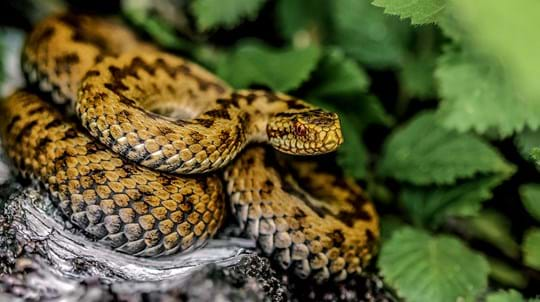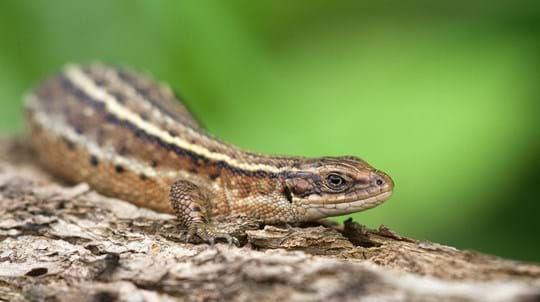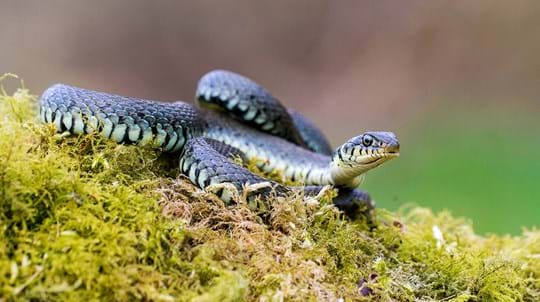
Credit: Amy Lewis / WTML
What do slow worms eat?
Slow worms eat a diet made up of invertebrates, including slugs, worms, snails and spiders. Their backward curving teeth are perfect for securing slippery or wriggly meals.
Legless lizards which are often mistaken for snakes. These sleek and subtle creatures are a common sight in UK woodland.
Common name: slow worm
Scientific name: Anguis fragilis
Family: Anguidae
Habitat: grassland, woodland edges, gardens, meadows
Diet: slugs, worms, snails and spiders
Predators: adders, birds, domestic cats
Origin: native
While slow worms may look like snakes, they are actually legless lizards. They have a smooth, glossy, grey or brown cylindrical body and, unlike snakes, a flat forked tongue, eyelids and a tail which sheds when under attack. The tail will carry on moving even when it has been shed in order to distract the predator.

Credit: Amy Lewis / WTML
Slow worms eat a diet made up of invertebrates, including slugs, worms, snails and spiders. Their backward curving teeth are perfect for securing slippery or wriggly meals.
The breeding season, which can be quite a hostile time for slow worms, takes place from May to June. Males become aggressive during this time, competing with each other for a mate. As part of the mating process, the male slow worm takes hold of the female by biting her neck or head. Mating can then go on for as long as 10 hours.
Slow worms are ovoviviparous, which means that they lay eggs internally. The eggs hatch inside the female slow worm’s body, and the young stay there for a while, living off the yolk of the egg. The female will then go on to give birth to live young.

Credit: David Chapman / Alamy Stock Photo
Slow worms burrow underground or find a crevice in a rotting tree stump to hibernate in over the winter, usually from October to March.
Slow worms are widespread throughout Britain, although they are absent from Ireland. They favour humid conditions and shaded areas, such as rough grassland, woodland edges, gardens, meadows and heathland.

Credit: Ann Jacobs / WTML
Keep an eye out for these legless lizards basking in the sun on warm days, in the woods or even in your own garden. They favour compost heaps, using the warmth to heat up their bodies.
Slow worms are protected under the Wildlife and Countryside Act, 1981, meaning it is an offence to kill, injure or sell them. Like much of the UK’s wildlife, they are threatened by habitat loss.

Trees woods and wildlife
The adder is the UK's only venomous snake, but it's incredibly shy of people. Discover its little known mating rituals, unusual facts, folklore and more.

Trees woods and wildlife
The common lizard is a speedy little fella, often seen basking in the sun. Find out how to spot it, what it eats and how it breeds.

Trees woods and wildlife
Grass snakes are the UK's most common snake species. Find out what they eat, where they live and how they breed.